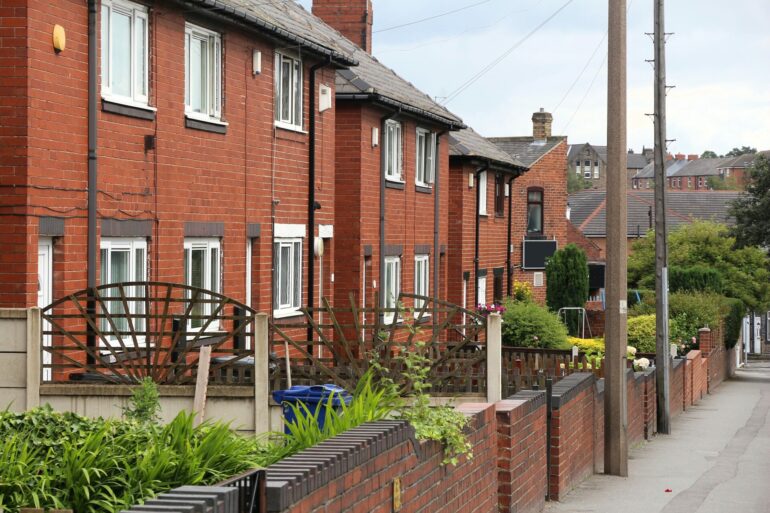UK house prices have continued their downward trajectory, falling by 0.8% month-on-month in August, according to Nationwide’s latest figures.
The annual change in house prices also showed a weakening, from -3.8% in July to -5.3% in August.
This marks an annual fall of around £14,600 on a typical home, and is the weakest rate since July 2009.
Robert Gardner, Nationwide’s chief economist, said: “August saw a further softening in the annual rate of house price growth to -5.3%, from -3.8% in July, the weakest rate since July 2009. Prices fell by 0.8% over the month, after taking account of seasonal effects.”
He attributed the slump to the rise in borrowing costs affecting the housing market, which is currently operating well below pre-pandemic levels.
“In particular, unemployment is expected to remain low (below 5%) and the vast majority of existing borrowers should be able to weather the impact of higher borrowing costs,” Gardner added.
The report also highlighted a drop in mortgage-related purchases. In the first half of 2023, the number of completed housing transactions was nearly 20% below pre-pandemic levels. On the other hand, cash transactions have proven to be more resilient.
Gardner said: “While activity is likely to remain subdued in the near term, healthy rates of nominal income growth, together with modestly lower house prices, should help to improve housing affordability over time, especially if mortgage rates moderate once Bank Rate peaks.”
Reaction
Sarah Coles, head of personal finance at Hargreaves Lansdown:
“Mortgage rates peaked in August, frightening buyers out of the market, stalling sales, and pushing house prices lower. We’ve now seen the biggest fall in house prices since the financial crisis.
“Nationwide measures mortgage approvals, which were hit hard by the hikes in mortgage rates during the summer. Inflation was proving surprisingly sticky, so lenders started to price in more rises. Moneyfacts data shows that the average 2-year fixed rate mortgage rose from 5.35% at the beginning of April to a recent peak of 6.85% at the start of August. As a result, Bank of England figures show a big drop in mortgage approvals. As buyers hurried out of the market, prices fell.
“However, this isn’t a sign that we’re definitely set for more rapid falls from here. It’s worth bearing in mind that last August was the peak of prices, and there are some factors working in the market’s favour. Mortgage rates have eased since. They fell through August and September, as inflation dropped and lenders felt more confident that we were reaching the peak of the rate rise cycle. The Bank of England’s decision to pause rate hikes has helped this trend, so that the average five-year fix has dropped below 6% and the average two-year fix is below 6.5%. We’re not back to April levels, and we may not get there for a while, but we’re moving in the right direction.
“It’s worth noting that when you take mortgages out of the picture, demand is still there. Cash purchases are up 2% since the onset of the pandemic. The market is still being underpinned by a high employment rate and wages which now out-pace inflation. Unfortunately, you can’t take mortgages out of the picture for most buyers, and the impact is stark. Transactions by home-movers involving a mortgage were down a third from pre-pandemic levels, and first-time buyers were down a quarter.
“For buyers, in a market like this, your ability to move and afford the property you need will depend to a large degree on the equity you have in your pocket. For first time buyers, raising a deposit is incredibly difficult against a backdrop of rising rents, so it’s even more important to make sure you’re getting every bit of help you can, from asking parents, to considering using a Lifetime ISA if you qualify, and getting a 25% bonus from the government to help you on your way.”




